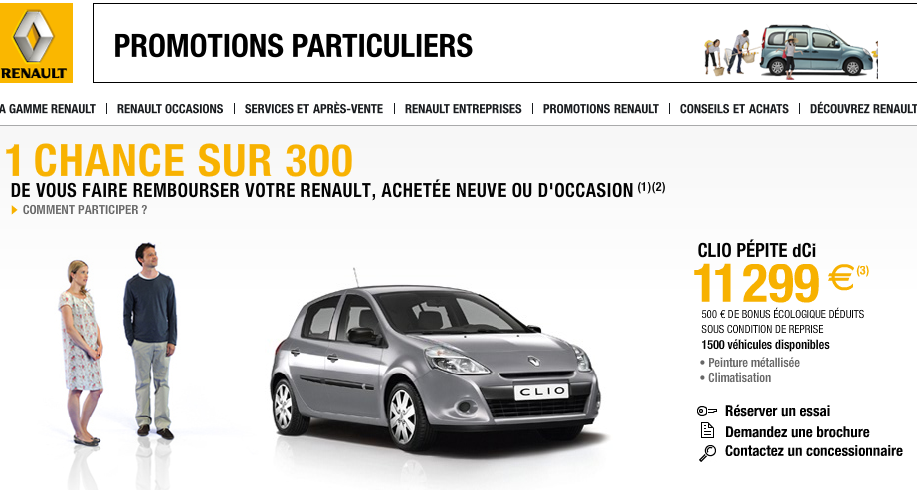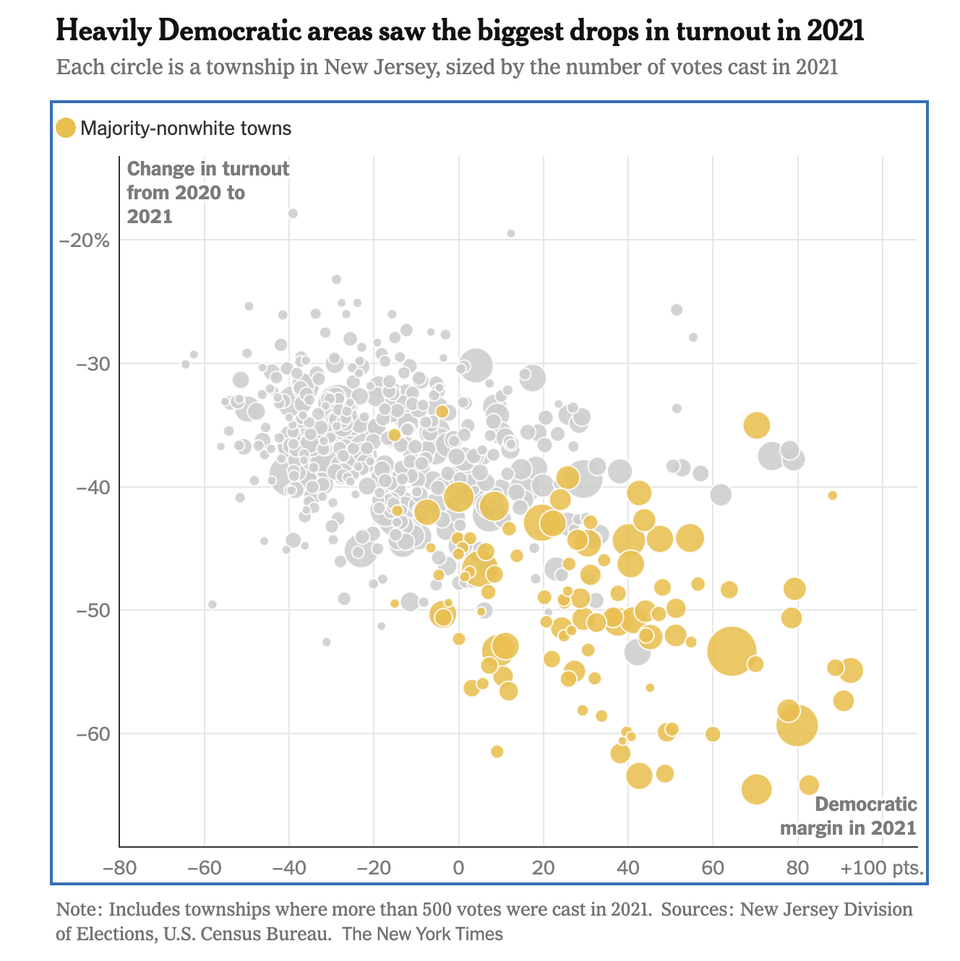Statistics calling for inequity?

Jerome C. points us to this ad by the French car-marker Renault:

For those who don't speak French (including me), this is a marketing campaign in which they will refund 1 out of every 300 car purchases, picked at random.
Jerome says:
How would it sound if a major car brand offered you a $50 rebate on a $15,000 car? ridiculous, and possibly insulting. Instead, car maker renault proposes to refund one car purchase out of 300. The ad campaign suggests that such an outcome is likely, compared to all the losing bets we are implicitly making every day. They are banking on the fact that this proposal is perceived as being more advantageous than typical discounts, although the expected value of the gambit is probably higher.
This lottery is no different from any lotteries out there. For positive outcomes, we tend to over-estimate the chance of success, something I discussed in Chapter 5. In any lottery, the average outcome (adjusted for probability of winning) is a useful number to summarize the universe of potential outcomes and to make a decision to play or not, but no player will win the "average" win; you either win the prize or you get nothing. Why would anyone play a lottery with negative expected return? There are lots of possible answers to this question. The one I like is: those who play like to think if someone has to win the lottery, then it would be me. (If you are the winner, the decision to play has been wise, in hindsight.)
In the case of Renault's campaign, Jerome considers the choice between a $50 rebate for everyone or a lottery offering a 1/300 chance to win a free car. One is a fair, equal distribution of spoils; the other, a winner-takes-all scheme.
Assume the expected values are the same. For Renault, the cash outlay would also be the same, assuming no difference in claim probability. But many customers probably prefer the lottery, the same people who buy lottery tickets every day. Jerome guesses, and I agree, that the latter would be more popular among customers, and thus have a higher marketing impact.



